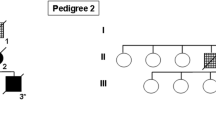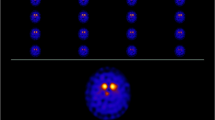Abstract
We report a sporadic tauopathy of 6-year duration in a 76-year-old woman. Her initial symptoms were asymmetrical parkinsonism and muscle weakness, with apraxia appearing 2 years later. The brain showed frontal and temporal cerebral atrophy; severe neuronal loss and gliosis were observed in the precentral cortex (loss of Betz cells was also evident) and premotor area, and in the medial temporal lobe, including the temporal tip, amygdala, and hippocampal CA1-subiculum border zone. The substantia nigra showed moderate neuronal loss and gliosis. In the spinal cord, loss of the anterior horn cells and degeneration of the corticospinal tracts were a characteristic feature. In addition, in the affected regions, the remaining neurons were often found to contain intracytoplasmic inclusions resembling neurofibrillary tangles. Tau immunostaining revealed widespread glial-predominant lesions in the cerebral gray and white matter. In contrast, predominance of neuronal lesions (pretangles/tangles) was a feature in the subcortical gray matter, including the spinal cord. The remaining upper and lower motor neurons were also affected by tau pathology. Accumulated tau in these glial cells and neurons was clearly recognized by a specific antibody against four-repeat (4R) tau. The ultrastructural presence of tau-positive tubular structures was confirmed in the glial cells and neurons (tangles). Immunoblotting of a frozen frontal lobe sample revealed accumulation of 4R-predominant tau isoforms. No mutations were found in the tau gene. These findings indicate that a sporadic 4R tauopathy can cause frontotemporal degeneration, parkinsonism, and motor neuron disease. The present case could represent a new clinicopathological phenotype of non-familial tauopathy.






Similar content being viewed by others
References
Baker M, Litvan I, Houlden H, Adamson J, Dickson D, Perez-Tur J, Hardy J, Lynch T, Bigio E, Hutton M (1999) Association of an extended haplotype in the tau gene with progressive supranuclear palsy. Hum Mol Genet 8: 711–715
Bigio EH, Lipton AM, Yen S-H, Hutton ML, Baker M, Nacharaju P, White CL, Davies P, Lin W, Dickson DW (2001) Frontal dementia with novel tauopathy: sporadic multiple system tauopathy with dementia. J Neuropathol Exp Neurol 60:328–341
De Silva R, Lashley T, Gibb G, Hanger D, Hope A, Reid A, Bandopadhyay R, Utton M, Strand C, Jowett T, Khan N, Anderton B, Wood N, Holton J, Revesz T, Lees A (2003) Pathological inclusion bodies in tauopathies contain distinct complements of tau with three or four microtubule-binding repeat domains as demonstrated by new specific monoclonal antibodies. Neuropathology Appl Neurobiol 29:288–302
Dickson DW (1999) Neuropathologic differentiation of progressive supranuclear palsy and corticobasal degeneration. J Neurol 246 [Suppl 2]: II6–15
Dickson DW, Litvan I (2003) Corticobasal degeneration. In: Dickson DW (ed) Neurodegeneration: the molecular pathology of dementia and movement disorders. ISN Neuropath Press, Basel, pp 115–123
Dickson DW, Bergeron C, Chin SS, Duyckaerts C, Horoupian D, Ikeda K, Jellinger K, Lantos PL, Lippa CF, Mirra SS, Tabaton M, Vonsattel JP, Wakabayashi K, Litvan I (2002) Office of Rare Diseases neuropathologic criteria for corticobasal degeneration. J Neuropathol Exp Neurol 61:935–946
Evans W, Fung HC, Steele J, Eerola J, Tienari P, Pittman A, Silva R de, Myers A, Vrieze FW, Singleton A, Hardy J (2004) The tau H2 haplotype is almost exclusively Caucasian in origin. Neurosci Lett 369: 183-185
Foster NL, Wilhelmsen K, Sima AA, jones MZ, D’Amato CJ, Gilman S (1997) Frontotemporal dementia and parkinsonism linked to chromosome 17: a consensus conference. Conference participants. Ann Neurol 41:706–715
Ghetti B, Hutton ML, Wszolek ZK (2003) Frontotemporal dementia and parkinsonism linked to chromosome 17 associated with tau gene mutations (FTDP-17T). In: Dickson DW (ed) Neurodegeneration: the molecular pathology of dementia and movement disorders. ISN Neuropath Press, Basel, pp 86–102
Hattori M, Hashizume Y, Yoshida M, Iwasaki Y, Hishikawa N, Ueda R, Ijika K (2003) Distribution of astrocytic plaques in the corticobasal degeneration brain and comparison with tuft-shaped astrocytes in the progressive supranuclear palsy brain. Acta Neuropathol 106:143–149
Hauw J-J, Agid Y (2003) Progressive supranuclear palsy (PSP) or Steele-Richardson-Olszewski disease. In: Dickson DW (ed) Neurodegeneration: the molecular pathology of dementia and movement disorders. ISN Neuropath Press, Basel, pp 103–114
Hutton M, Lendon CL, Rizzu P, Baker M, Froelich S, Houlden H, Pickering-Brown S, Chakraverty S, Isaacs A, et al (1998) Association of missense and 5’-splice-site mutations in tau with the inherited dementia FTDP-17. Nature 393:702–705
Iseki E, Matsumura T, Marui W, Hino H, Odawara T, Sugiyama N, Suzuki K, Sawada H, Arai T, Kosaka K (2001) Familial frontotemporal dementia and parkinsonism with a novel N296H mutation in exon 10 of the tau gene and a widespread tau accumulation in the glial cells. Acta Neuropathol 102:285–292
Katsuse O, Iseki E, Arai T, Akiyama H, Togo T, Uchikado H, Kato M, Silva R de, Lees A, Kosaka K (2003) Four-repeat tauopathy sharing pathological and biochemical features of corticobasal degeneration and progressive supranuclear palsy. Acta Neuropathol 106:251–260
Kobayashi T, Ota S, Tanaka K, Ito Y, Hasegawa M, Umeda Y, Motoi Y, Takahashi M, Yasuhara M, Anno M, Mizuno Y, Mori H (2003) A novel L266V mutation of the tau gene causes frontotemporal dementia with a unique tau pathology. Ann Neurol 53:133–137
Komori T, Arai N, Oda M, Nakayama H, Mori H, Yagishita S, Takahashi T, Amano N, Murayama S, Murakami S, Shibata N, Kobayashi M, Sasaki S, Iwata M (1998) Astrocytic plaques and tufts of abnormal fibers do not coexist in corticobasal degeneration and progressive supranuclear palsy. Acta Neuropathol 96:401–408
Kuroda S, Otsuki S, Tateishi J, Hirano A (1979) Neurofibrillary degeneration in a case of quadriplegia and myoclonic movement. Acta Neuropathol 45:105–109
Lipton AM, White III CL, Bigio EH (2004) Frontotemporal lobar degeneration with motor neuron disease-type inclusions predominates in 76 cases of frontotemporal degeneration. Acta Neuropathol 108:379–385
Litvan I, Agid Y, Calne D, Campbell G, Dubois B, Duvoisin RC, Goetz LI, Golbe LI, Grafman J, Growdon JH, Hallett M, Jankovic J, Quinn NP, Tolosa E, Zee DS (1996) Clinical research criteria for the diagnosis of progressive supranuclear palsy (Steele-Richardson-Olszewski syndrome): report of the NINDS-SPSP international workshop. Neurology 47:1-9
Litvan I, Grimes DA, Lang AE (2000) Phenotypes and prognosis: clinicopathologic studies of corticobasal degeneration. Adv Neurol 82:183–196
Lynch T, Sano M, Marder KS, Bell KL, Foster NL, Defendini RF, Sima AAF, Keohane C, Nygaard TG, Fahn S, Mayeux R, Rowland LP, Wilhelmsen KC (1994) Clinical characteristics of a family with chromosome 17-linked disinhibition-dementia-parkinsonism-amyotrophy complex. Neurology 44:1878–1884
Martinaud O, Laquerrière A, Guyant-Maréchal L, Ahtoy P, Vera P, Sergeant N, Camuzat A, Bourgeois P, Hauw JJ, Campion D, Hannequin D (2005) Frontotemporal dementia, motor neuron disease and tauopthy: clinical and neuropathological study in a family. Acta Neuropathol 110:84–92
McKhann GM, Albert MS, Grossman M, Miller B, Dickson D, Trojanowski JQ (2001) Clinical and pathological diagnosis of frontotemporal dementia. Report of the work group on frontotemporal dementia and Pick’s disease. Arch Neurol 58:1803–1809
Piao Y-S, Wakabayashi K, Kakita A, Yamada M, Hayashi S, Morita T, Ikuta F, Oyanagi K, Takahashi H (2003) Neuropathology with clinical correlations of sporadic amyotrophic lateral sclerosis: 102 autopsy cases examined between 1962 and 2000. Brain Pathol 12:10–22
Rizzu P, Van Swieten JC, Joosse M, Hasegawa M, Stevens M, Tibben A, Niermeijer MF, Hillebrand M, Ravid R, Oostra BA, Goedert M, Duijn CM van, Heutink P (1999) High prevalence of mutations in the microtubule-associated Protein tau in a population study of frontotemporal dementia in the Netherlands. Am J Hum Genet 64:414–421
Spillantini MG, Bird TD, Ghetti B (1998) Frontotemporal dementia and parkinsonism linked to chromosome 17: a new group of tauopathies. Brain Pathol 8:387–402
Tan C-F, Piao Y-S, Kakita A, Yamada M, Takano H, Tanaka M, Mano A, Makino K, Nishizawa M, Wakabayashi K, Takahashi H (2005) Frontotemporal dementia with co-occurrence of astrocytic plaques and tufted astrocytes, and severe degeneration of the cerebral white matter: a variant of corticobasal degeneration? Acta Neuropathol 109:329–338
Uchihara T, Ikeda K, Tsuchiya K (2003) Pick body disease and Pick syndrome. Neuropathology 23:318–326
Zarranz JJ, Ferrer I, Lezcano E, Forcadas MI, Eizaguirre B, Atarés B, Puig B, Gómez-Esteban JC, Fernández-Maiztegui C, Rouco I, Pérez-Concha T, Fernández M, Rodríguez O, Rodríguez-Martínez AB, Pancorbo MM de, Pastor P, Pérez-Tur J (2005) A novel mutation (K317M) in the MAPT gene causes FTDP and motor neuron disease. Neurology 64:1587–1585
Acknowledgements
We thank C. Tanda, J. Takasaki, Y. Ota, N. Kaneko and S. Egawa for their technical assistance. This work was supported by a grant from the Research Committee on Neurodegenerative Diseases, Ministry of Health, Labor and Welfare, Japan (H.T.), and a grant from the Reta Lila Weston Trust for Medical Research, UK (R.de S.).
Author information
Authors and Affiliations
Corresponding author
Additional information
Y.-S. Piao and C.-F. Tan contributed equally to this work.
Rights and permissions
About this article
Cite this article
Piao, YS., Tan, CF., Iwanaga, K. et al. Sporadic four-repeat tauopathy with frontotemporal degeneration, parkinsonism and motor neuron disease. Acta Neuropathol 110, 600–609 (2005). https://doi.org/10.1007/s00401-005-1086-5
Received:
Revised:
Accepted:
Published:
Issue Date:
DOI: https://doi.org/10.1007/s00401-005-1086-5




